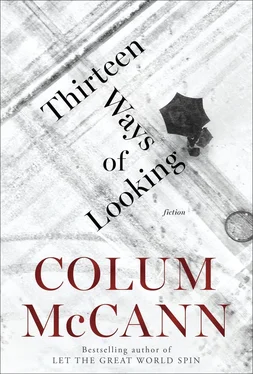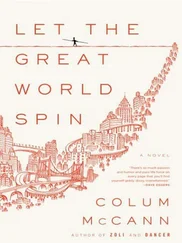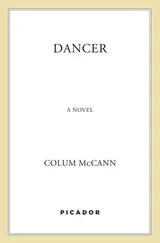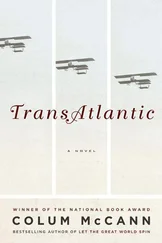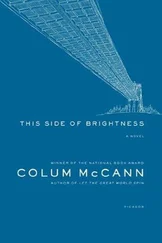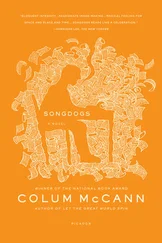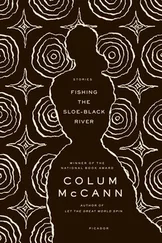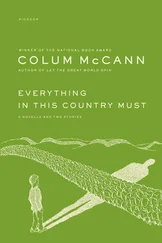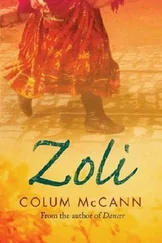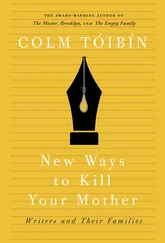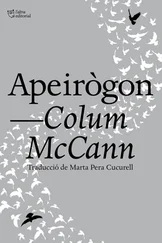Colum McCann - Thirteen Ways of Looking
Здесь есть возможность читать онлайн «Colum McCann - Thirteen Ways of Looking» весь текст электронной книги совершенно бесплатно (целиком полную версию без сокращений). В некоторых случаях можно слушать аудио, скачать через торрент в формате fb2 и присутствует краткое содержание. Год выпуска: 2015, Издательство: Random House Publishing Group, Жанр: Современная проза, на английском языке. Описание произведения, (предисловие) а так же отзывы посетителей доступны на портале библиотеки ЛибКат.
- Название:Thirteen Ways of Looking
- Автор:
- Издательство:Random House Publishing Group
- Жанр:
- Год:2015
- ISBN:нет данных
- Рейтинг книги:5 / 5. Голосов: 1
-
Избранное:Добавить в избранное
- Отзывы:
-
Ваша оценка:
- 100
- 1
- 2
- 3
- 4
- 5
Thirteen Ways of Looking: краткое содержание, описание и аннотация
Предлагаем к чтению аннотацию, описание, краткое содержание или предисловие (зависит от того, что написал сам автор книги «Thirteen Ways of Looking»). Если вы не нашли необходимую информацию о книге — напишите в комментариях, мы постараемся отыскать её.
and
comes an eponymous novella and three stories that range fluidly across time, tenderly exploring the act of writing and the moment of creation when characters come alive on the page; the lifetime consequences that can come from a simple act; and the way our lives play across the world, marking language, image and each other.
Thirteen Ways of Looking Brilliant in its clarity and deftness, this collection reminds us, again, why Colum McCann is considered among the very best contemporary writers.
Thirteen Ways of Looking — читать онлайн бесплатно полную книгу (весь текст) целиком
Ниже представлен текст книги, разбитый по страницам. Система сохранения места последней прочитанной страницы, позволяет с удобством читать онлайн бесплатно книгу «Thirteen Ways of Looking», без необходимости каждый раз заново искать на чём Вы остановились. Поставьте закладку, и сможете в любой момент перейти на страницу, на которой закончили чтение.
Интервал:
Закладка:
Elliot is the first of the family to arrive. He steps out from his dark limousine and, interestingly enough, does not go to the other side of the car to help his wife emerge. Rather, he stands in the middle of the pavement and gazes up at the name of the funeral home as if he wants to read some deep significance into it. No outward sign of sorrow, though he still wears a torn black ribbon over his heart, a gesture at least to ancient tradition. His wife is a pile-up of peroxide. She stands alongside him, both together and apart. She has three children from previous marriages, and they step out from the car as if part of a moon landing, teenage boys, all gangle and long hair, looking as if they are already bored with their own patented slouch.
Elliot nods at them, checks his watch, consults his cell phone, a man distracted.
The daughter arrives ten minutes after Elliot. Katya Atkinson. Dark-eyed with grief and travel. She looks younger: early fifties maybe. She wears a dark skirt and a matching jacket. There is something fierce and intelligent about her. A streak of gray in her hair. She steps her agile way over the curbside puddle, toward her brother. Elliot leans down to give her a perfunctory kiss on the cheek.
Together, brother and sister step toward the funeral home and are soon engulfed by others who have arrived almost simultaneously in a polite wave: judges, office workers, neighbors. The super and the doormen, including Tony DiSalvo. Sally James. At least one hundred people. Among them, too, the restaurant manager, Christopher Eagleton, and the busboy, Dandinho, who, upon his appearance, is marked as a person of significant suspicion: why in the world would the busboy arrive at the funeral?
The detectives return again to the restaurant footage, but Dandinho never leaves the building, not once, he simply has his animated conversation with Pedro Jiménez by the dishwashing station, and he is most certainly located on the footage by the bar when the punch is thrown outside the restaurant. Dandinho is, in fact, one of the first to go to Mendelssohn’s aid when he falls. He is calm and controlled when questioned, not a hint of guilt about him, keen to point out that Mendelssohn was one of his favorite customers, that he always took home his leftovers for his housekeeper, tipped well, was old-world, polite, a hint of a twinkle still in his eye. He did not witness the actual punch, although he heard the thump of the old man’s head on the pavement, he thought at first that maybe Mendelssohn had just slipped on the ice, but he knew immediately that he was dead, an awful thing, he felt very sorry for him, a terrible way to go, he went to the funeral to pay his respects, it was the Christian thing to do.
Although still a person of interest, the detectives rule Dandinho out. Same, too, with Eagleton.
They comb the funeral footage, looking for any other face or body language that might strike them as needing attention — they push in, push out, brush forward, rewind, bookmark what they find interesting, but there is nothing more compelling than the appearance of the middle-aged busboy.
And so, like the snow, or the latter point in a poem, the theories drift across the screen, opposition and conflict, so many possibilities available to the detectives, all of them intersecting in various ways, a Venn diagram of intent, the real world presenting itself with all its mystery — is it a murder of inheritance, a murder of jealousy, a murder of retribution, a murder of bitterness, or a murder simply tied to the random? They cannot discount the notion that it could be tied to an old case of Mendelssohn’s, a resurfacing on an anniversary, or a con just out of prison after serving a long sentence, or a specific grudge that has been left many years in abeyance, even though Mendelssohn has been retired from Kings County for six years and the detectives are unable to pinpoint any obvious cases likely to have left him with such a long-term enemy. A few gangland murders. The Screaming Phantoms, the Driggs Boys of Justice, the Tikwando Brothers, the Dirty Ones, the Vanguards, the Black Hands. Several minor Mafia figures and an early encounter with Roy DeMeo but no conviction. Some corruption cases. Break-ins. Carjackings. A high-profile city discrimination case in the late 1980s. Thousands of minor cases over the years. He was well liked in the corridors of Adams Street. He was known to spar verbally with the lawyers, but had a reputation as a relatively soft judge, a man of light sentence. No significant anniversaries. No candidates recently released from prison. Who would wait over a decade to extract revenge? Could it be that Sally James gave someone the nod along Madison Avenue and pointed him out? After all, Elliot Mendelssohn had installed cameras in the apartment to watch her, and he was aware that Sally had been given a generous stipend in the will to look after her nephew’s education. Or could it be that Elliot himself wanted to hurry up the inheritance? Perhaps he has some financial problems? When they question him about his restaurant phone calls he admits to having had a dalliance with his secretary, Maria Casillias, having recently fired her. Perhaps he was upset at something his father said to him? It is not beyond possibility that the anger built up inside him and he snapped. Or that he hired someone to snap on his behalf. Or perhaps there could be a tie-in with Katya, someone keen to wreck the final tatters of the Mideast peace process? But why would they do that in New York rather than Israel, and why would they go after her father rather than her? Could it be something that Mendelssohn said on his way out of the restaurant, just a glancing comment that elicited anger from a passerby? But there have been no other incidents along the street, on Park or Fifth or even down Lexington, and when they check the subway cameras they cannot locate anyone at all in a puffy jacket or a Boston College hat: it is as if the attacker has disappeared into thin air.
They play it again in their minds, in light of everything they already know. It is their hope that each moment, when ground down and sifted through, examined and prodded, read and reread, will yield a little more of the killer and the world he, or she, has created. They go forward metrically, and then break time again. They return, judge, reconfigure. They weigh it up and take stock, sift through, over and over. The breakthrough is there somewhere in the rhythmic disjunctions, in the small resuscitations of language, in the fractured framework.
The closest they have come to the killer is still in the footage just outside the restaurant where he steps into the frame for a quarter second in his jacket and hat, a man, most likely, bending over the body of Mendelssohn, maybe to check if he is alive, maybe to whisper some obscenity. The attacker pulls back and out of the frame and there is nothing more they can tell about him. He is, in essence, just a hat and a shadow. Moments later it is Dandinho bending over the old man, then the restaurant manager, Eagleton, followed by the waitress and the coat-check girl, and within minutes Mendelssohn is surrounded by dozens of passersby, the blood rivering from him, his hat fallen sideways, the bag of leftovers on the ground, a leak of dill sauce into the snow.
They rewind and freeze the attacker in his B.C. hat. Strange that, to come all the way from Boston. Or at least to showcase it in a rival city. And it is then that it hits them — one of those odd moments, when the truth comes in a sharp little slice, opening the echo chambers, releasing the synapses — that they may have been thinking in the wrong direction for quite a while now, and they have been flummoxed by their own preconceptions, like archaeologists, or critics, or literary scholars, and that it is so much more simple than they want it to be, and much of it lies in the attacker’s hat, the most available piece of evidence, but perhaps it is not a Boston College hat at all, but it could have any number of meanings, British Columbia, or a rock band, or the comic strip, an endless litany of B.C .’s, maybe even personal initials, but it could also possibly be the Brooklyn Cyclones, a minor-league team, yes, but a staple of the New York imagination, and this is the moment when the smallest of things becomes the linchpin, when the pit in the stomach grows, so that when the detectives google the Brooklyn Cyclones, they realize that the hats do have a similar texture to Boston College, the C braided into the B, they could easily be mistaken for one another, almost identical, especially in the off-color of the video images, the only difference being that the Boston College hat nearly always has an eagle braided into the brim, and how come they overlooked such a simple notion is beyond them, yes, of course, it must be the Cyclones, given that it’s closer to home, and perhaps then the killer is from Brooklyn, and wasn’t there somewhere along the course of the investigation that they saw a Brooklyn Cyclones reference, someone wearing a T-shirt, or something along those lines, a poster perhaps, yes, a poster, didn’t it creep along their sightlines, didn’t they make a vague note of it earlier when they were casting around? Or is it one of the recipients of Mendelssohn’s justice in Brooklyn long ago, a grudge revisited, did the Cyclones somehow creep into his litany of cases? Or is it just their imaginations and have the Cyclones never been mentioned at all?
Читать дальшеИнтервал:
Закладка:
Похожие книги на «Thirteen Ways of Looking»
Представляем Вашему вниманию похожие книги на «Thirteen Ways of Looking» списком для выбора. Мы отобрали схожую по названию и смыслу литературу в надежде предоставить читателям больше вариантов отыскать новые, интересные, ещё непрочитанные произведения.
Обсуждение, отзывы о книге «Thirteen Ways of Looking» и просто собственные мнения читателей. Оставьте ваши комментарии, напишите, что Вы думаете о произведении, его смысле или главных героях. Укажите что конкретно понравилось, а что нет, и почему Вы так считаете.
